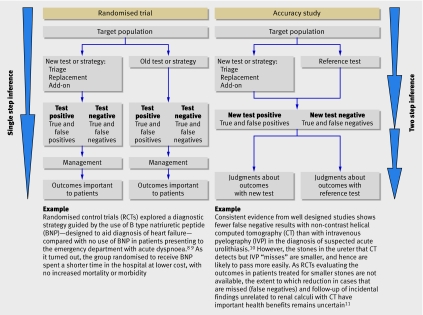Fig 1 Two generic ways in which a test or diagnostic strategy can be evaluated. On the left, patients are randomised to a new test or strategy or to an old test or strategy. Those with a positive test result (cases detected) are randomised (or were previously randomised) to receive the best available management (second step of randomisation for management not shown). Investigators evaluate and compare patient-important outcomes in all patients in both groups.2 On the right, patients receive both a new test and a reference test (old or comparator test or strategy). Investigators can then calculate the accuracy of the test compared with the reference test (first step). To make judgments about importance to patients of this information, patients with a positive test (or strategy) in either group are (or have been in previous studies) submitted to treatment or no treatment; investigators then evaluate and compare patient-important outcomes in all patients in both groups (second step)

An official website of the United States government
Here's how you know
Official websites use .gov
A
.gov website belongs to an official
government organization in the United States.
Secure .gov websites use HTTPS
A lock (
) or https:// means you've safely
connected to the .gov website. Share sensitive
information only on official, secure websites.
